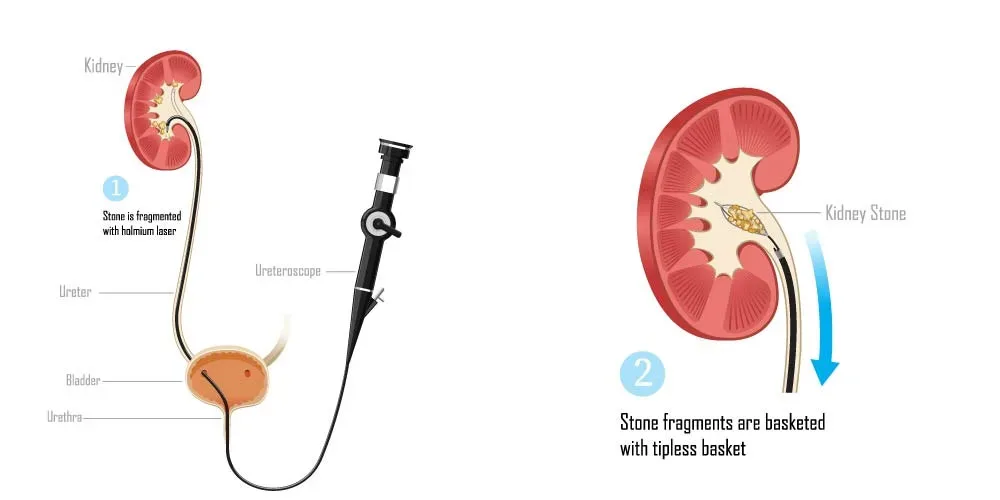+91 8007542142/ 8591009591
drprakash13@gmail.com
Monday to Saturday : 05:00PM TO 06:00PM

RIRS or retrograde intrarenal surgery is a non-invasive advanced procedure to remove large kidney stones using precise laser technology. The stones treated with RIRS are immune to medications or the stone size is too large to be removed using ureteroscopy or shockwave lithotripsy. The procedure is mostly recommended for the removal of kidney stones that are less than 15mm in size. However, some studies reveal that RIRS can also be used to treat kidney stones up to 20mm in size depending on the age of the patient, history of open surgery, number of stones, etc.
RIRS is an advanced surgical treatment for stubborn kidney stones. The doctor administers spinal or general anesthesia before the procedure to ensure no pain during the surgery. The urologist uses imaging tests to determine the precise location of the stone. Then, a device called a ureteroscope is used to look inside the ureteral passage. The device is attached to a camera and on the other end which guides the surgeon inside the body to locate stones or point of ureteral congestion.
The surgeon may use forceps to remove the stones in their intact form or break them into smaller fragments using precise laser beams. Advanced holmium laser is used to target the stone to break or manipulate them without damaging the surrounding organs. The stone fragments are then subsequently flushed out of the body via urine.
While small stones are comparatively easier to break and expel from the body, larger stones may require ‘extra space’. This problem is solved using double J stents or ureteral stents that expand the ureteral passage for easier movement of stones. This allows the stone pieces to move smoothly along the ureter without causing much pain. The stents may be removed within 10-14 days after the surgery depending on whether the stones are completely flushed out of the body or not.
Plot no 70, Moreshwar Heritage, Sector 5, Ulwe, Navi Mumbai, Maharashtra 410206
For Booking: +91 8591009591
Chat With Us
Mini Sea Shore Road, Juhu Nagar, Sector 10A, Vashi, Navi Mumbai, Maharashtra 400703
For Booking: 02262857000
Chat With Us
Shop No 12 & 13, Millennium Park CHS Beside RBL Bank Ruparel Chowk, Nerul East, Sector 25, Navi Mumbai, Maharashtra 400706
For Booking: +917277203204
Chat With Us